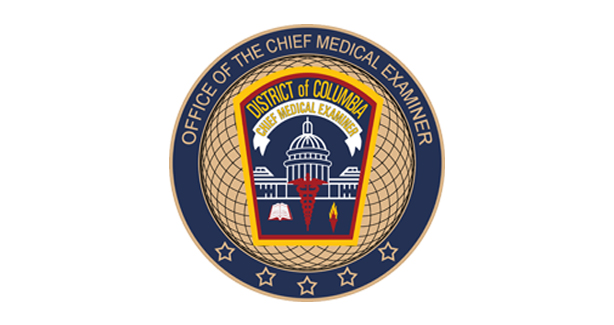Opioid and Drug Overdoses:
This dashboard provides an in-depth analysis surrounding events and characteristics of individuals who experienced non-fatal and/or fatal opioid overdoses in the District of Columbia. This multiagency dashboard is shared by OCME, DC Health, DBH, DFS, etc. LiveLongDC is the coordinated effort for opioid response. More information can be found here: https://livelong.dc.gov/ . If you have any questions about the dashboard, please contact [email protected].

Epidemiology and Surveillance Reports
The DC Office of the Chief Medical Examiner's Epidemiology and Surveillance Reports
Opioid and Drug Overdoses:
DC Opioid Overdose Dashboard *new*
This dashboard provides an in-depth analysis surrounding events and characteristics of individuals who experienced non-fatal and/or fatal opioid overdoses in the District of Columbia. This multiagency dashboard is shared by OCME, DC Health, DBH, DFS, etc. LiveLongDC is the coordinated effort for opioid response. More information can be found here: https://livelong.dc.gov/ . If you have any questions about the dashboard, please contact [email protected].
______________________________________________________________________________________________________________________
- Opioid-related Fatalities: January 1, 2018, to June 30, 2024 - The above dashboard has replaced this report, which will be updated monthly and contain additional data points.
Report Date: September 19, 2024
Prepared by: DC Office of the Chief Medical Examiner
Report Date: March 20, 2024
Prepared by: DC Office of the Chief Medical Examiner
Report Date: April 26, 2023
Prepared by: DC Office of the Chief Medical Examiner
Report Date: March 16, 2022
Prepared by: DC Office of the Chief Medical Examiner
Report Date: November 28, 2022
Prepared by: DC Office of the Chief Medical Examiner
Report Date: December 19, 2022
Prepared by: DC Office of the Chief Medical Examiner
Report Date: March 8, 2023
Prepared by: DC Office of the Chief Medical Examiner
Report Date: June 24, 2019
Prepared by: DC Office of the Chief Medical Examiner
Report Date: July 13, 2017
Prepared by: DC Office of the Chief Medical Examiner
DC Traffic-Related Fatalities:
Report Date: August 16, 2023
Prepared by: DC Office of the Chief Medical Examiner
COVID-19 Related Deaths:
Report Date: July 20, 2020
Prepared by: DC Office of the Chief Medical Examiner
Violence and Injury:
Report Date: January 17, 2023
Prepared by: DC Office of the Chief Medical Examiner
Report Date: September 11, 2023
Prepared by: DC Office of the Chief Medical Examiner
Report Date: March 22, 2023
Prepared by: DC Office of the Chief Medical Examiner
Report Date: June 21, 2019
Prepared by: DC Office of the Chief Medical Examiner
Report Date: March 27, 2019
Prepared by: DC Office of the Chief Medical Examiner
Report Date: December 21, 2018
Prepared by: DC Office of the Chief Medical Examiner
Report Date: May 18, 2018
Prepared by: DC Office of the Chief Medical Examiner
Report Date: November 21, 2017
Prepared by: DC Office of the Chief Medical Examiner
Additional Reports:
- Deaths among Undomiciled/Homeless Individuals: January 1, 2020 to December 11, 2020
- Overview of Infant Sleeping Deaths that Occurred in the District of Columbia (January 2016 to December 2016)
- 2017 Overview of Infant Sleeping Deaths That Occurred in the District of Columbia by Jurisdiction Residence
- Fatalities Among the DC Undomiciled Population (January 1, 2013 to December 31, 2017)
- 2013 Elder Accidental Fall Report
- A 30 - Year Review of Homicides in the District of Columbia (1972-2002)
- A 30 - Year Review of Suicides in the District of Columbia (1972-2002)
- Special Reports - Hypothermia Deaths, Homeless Decedents and Public Dispositions


